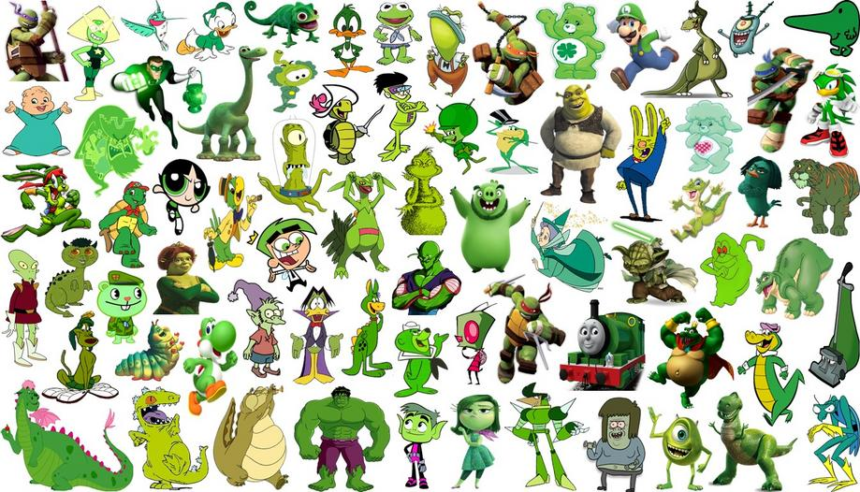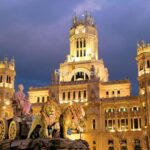Green is a color frequently associated with nature, growth, and renewal. still, in the world of fabrication and pop culture, it’s also a striking and memorable color used for some of the most iconic characters. From superheroes to brutes of myth, green characters frequently carry a emblematic communication, while also being visually distinct. Let’s dive into the world of some notorious green characters, explore their origins, and see why green has been the color of choice for these fascinating numbers.
The Hulk: A Green Giant of Power and Rage
One of the most notorious green characters in ultramodern pop culture is The gawk. Created by Stan Lee and Jack Kirby for Marvel Comics, the gawk first appeared in The inconceivable gawk# 1 in 1962. The character, Bruce Banner, is a mild- mannered scientist who, after exposure to gamma radiation, transforms into the gawk — a gigantic green beast — whenever he experiences wrathfulness.
The green color of the gawk represents further than just his monstrous appearance; it’s a reflection of his willful rage, his physical and emotional fermentation. Interestingly, the gawk was firstly supposed to be argentine, but due to publishing issues, he came green — a color that has since come iconic. The gawk’s color makes him stand out, emblematizing both his preternatural strength and his separation from humanity.
Yoda: A Wise Green Mentor
Within the world distant, far down, one of the foremost recognizable green characters is Yoda from Star Wars. To begin with presented within The Domain Strikes Back in 1980, Yoda snappily came a fiend fave due to his shrewdness, authority of the Drive, and unique discourse design. As a Jedi Ace, Yoda trains energetic Jedi within the ways of the Drive, counting Luke Skywalker, who plays a crucial portion in vanquishing the Dim Side.
Yoda’s green skin ties him to nature and the natural viewpoints of life, which adjusts with the gospel of the Constrain in Star Wars, a life vitality that interfaces all living creatures. His green tinge sets him piecemeal from the other characters and reflects his outsider beginnings. Yoda’s color and calm address display a solid inconsistency to the dim, mechanical strengths spoken to by characters like Darth Vader, emphasizing his portion as a image of adjust and peace.
Shrek: The Lovable Green Ogre
Shrek, the nominal character from DreamWorks’ Shrek series, has come one of the most cherished amped characters since his debut in 2001. Shrek is an ogre who prefers solitariness in his swamp, but his life changes when he embarks on a trip to deliver Princess Fiona. His green color symbolizes his status as an stranger, both stressed and misknew by others due to his appearance.
Still, as the flicks progress, Shrek’s character challenges the conception of ogres as monsters. His green skin becomes a symbol of his inner kindness and the communication that beauty is further than skin deep. Through Shrek, cult learn the value of accepting differences and understanding that true worth falsehoods within.
Teenage Mutant Ninja Turtles: Green Heroes in a Half Shell
The Adolescent Mutant Ninja Turtles( TMNT) are another bunch of green characters who have cleared out an extraordinary stamp on pop culture. Made by Kevin Eastman and Dwindle Laird in 1984, the TMNT are four mutant turtles — Leonardo, Michelangelo, Donatello, and Raphael who have been prepared within the craftsmanship of ninjutsu by their rodent sensei, Splinter. Their green color may be a coordinate result of their transformation from standard turtles into creatural symbols .
The TMNT’s green appearance reflects their connection to both their original beast forms and the seamster terrain in which they live. Despite their reptilian features, the turtles are relatable, heroic characters with distinct personalities. Their green color makes them visually stand out as they battle villains, reminding observers that icons can come by all shapes, sizes, and colors.
Kermit the Frog: A Green Icon of Positivity
Many green characters are as widely cherished as Kermit the Frog, the star of The Muppet Show and multitudinous Muppet pictures. Created by Jim Henson in 1955, Kermit’s green color has come synonymous with his friendly, easygoing nature. Unlike numerous of the further monstrous or alien green characters, Kermit’s green skin serves to emphasize his connection to the natural world, as he is, after all, a frog.
Kermit’s color also reflects his part as a neutral, comforting presence among the frequently chaotic cast of Muppets. His notorious banner, “ It’s not easy being green, ” has come an hymn for anyone who feels different or out of place, emphasizing the deeper themes of acceptance and individuality that the character embodies.
The Green Goblin: A Villain Cloaked in Green
Not all green characters are symbols . The Green Troll, one of Insect– Man’s most formidable enemies, may be a tall outline of how the color herbage can moreover emblematize ill. The Green Troll to begin with showed up within The Astonishing Spider- Man# 14 in 1964 and has since come one of the foremost recognizable reprobates within the Wonder Universe.
The Green Goblin, aka Norman Osborn, dons a green costume to round his troll persona. In this case, green symbolizes his madness, covetousness, and thirst for power. His minatory appearance — green mask, glider, and pumpkin losers gives him a menacing look that makes him one of the most fearsome characters in ridiculous book history.
The Grinch: A Green Icon of Redemption
The Grinch, from Dr. Seuss’ How the Grinch Stole Christmas, is another green character who begins as a reprobate but experiences a transformation. To begin with distributed in 1957, the Grinch could be a testy critter who detests Christmas and the delight it brings. His green color symbolizes his rapaciousness and intensity toward the Whos of Whoville, who celebrate the get-away with cheer.
Still, by the end of the story, the Grinch learns the true meaning of Christmas, and his green color takes on a new meaning — representing growth, renewal, and redemption. The Grinch’s story is a memorial that indeed those who feel the most pessimistic or inhuman can change for the better.
Conclusion
Green characters have been a chief in pop culture for decades, representing a wide range of themes, from strength and wisdom to insulation and redemption. Whether they’re superheroes, villains, or precious brutes, these green icons capture our imaginations with their distinctive appearance and rich symbolism. Through characters like the gawk, Yoda, Shrek, and Kermit, the color green continues to play an important part in liar, reminding us that the most vibrant personalities frequently come in unanticipated tones.












